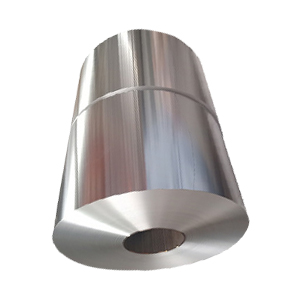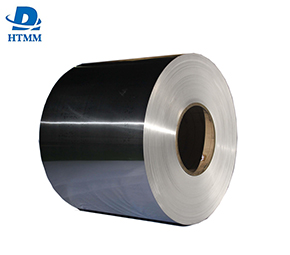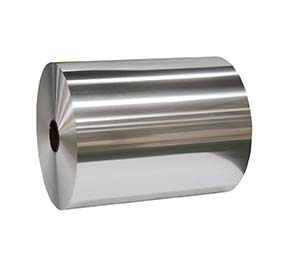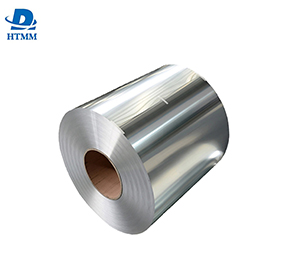Although the outside of aluminum foil is similar, there are significant technological variances.Please allow me to introduce the specifications of aluminum foil 8011, which has the widest application range.

For industrial and commercial purposes, aluminum foil is frequently referred to as 8011. The following are some of the primary qualities, applications, and tempers of aluminum foil 8011:
Features:
- Constructed of rolled aluminum sheets
- A gauge that is relatively thin, often between 0.004 and 0.007 inches thick
- Has one or both sides that frequently have a glossy or matte surface.
- Available in a range of widths between 6 and 72 inches.
primary uses
- Food packaging: enclosing baked products, cheese, snacks, and meats
- Chemical packaging, including shelf liners and container liners
- Between components, as barrier layers, electrical insulation
- Insulating and separating elements in the manufacture of medical devices
- Ducting for air ventilation systems in HVAC systems
A few typical tempers for aluminum foil 8011
- O (Soft) - Aluminum is heated and then carefully cooled to provide the softest temper. optimum formability and ductility is offered. used frequently for food packing.
- H (Hard) - The hardness of the H temper is represented by the second digit, which ranges from H18 to H24, with H18 representing the hardest material. Because the aluminum foil in this temper is relatively soft and hard and can be used for food containers with a high yield, we advise customers to use it.
As a result of the many tempers and surface treatments offered, aluminum foil 8011 is a versatile industrial material utilized for a wide range of applications. You can alter the gauge, width, and temper to suit your particular requirements.
Aluminum foil comes in a variety of kinds, including flexible packaging aluminum foil, laminate aluminum foil, pharmaceutical aluminum foil, food container aluminum foil, cable aluminum foil, heat-sealing aluminum foil, and ornamental aluminum foil.The most popular variety of this is home aluminum foil.
A wide variety of thickness of household aluminum foil are available to meet various cooking and packaging applications. Typically, home foil has a thickness of 8 to 25 mic.
• 0.00035 inches (9 microns) - This is a common thickness of thin foil for baking and basic wrapping.
• Foil with a medium thickness of 0.0005 inches (12.5 microns) is strong enough to wrap packages and line baking pans.
• Foil with a thickness of 0.0008 inches (20 microns) is used for heavy-duty cooking and lining casserole dishes.
The thickest home foil, measuring 0.001 inches (25 microns), is used for oven bags and to wrap sizable portions of meat.
.jpg)
Based on their regular cooking and usage practices, several nations tend to favor particular foil thicknesses:
• In Europe, lighter weight foils and smaller portion sizes are preferred, hence thinner foils (5-12.5 microns) are more prevalent.
• Medium to heavy duty foils (12.5 to 25 microns) are the norm in North America because of the region's bigger portion sizes, casserole baking, and oven cooking.
• Australia - Due to the preference for larger chunks of meat and for heavy duty cooking, thicker foils (20–25 microns) are preferred there.
Thinner foils are typically more flexible, whereas thicker foils offer more rigidity, strength, and longevity. Customers can select the foil thickness that best suits their intended use and cooking method.
Working directly with an aluminum foil factory as opposed to dealers has the following key benefits:
1. Lower prices - Without the markups of middlemen, factories can sell to you directly at wholesale costs. You might save 20–30% or more by doing this on your purchases of aluminum foil.
2.Customization - Factories have the knowledge, resources, and size to produce aluminum foil according to your precise requirements. This could involve the breadth, printing, coating, thickness, and other properties.
3.Big order sizes - Factories can manufacture and deliver aluminum foil in the big orders that commercial clients need. For smaller firms, minimum order amounts from dealers are frequently too large.
4.Shorter lead times - Because factories manufacture their own aluminum foil, they can frequently complete large orders faster than merchants who must procure goods from several sources.
5. Quality control - The production process and quality standards are entirely under the factories' complete supervision. To make sure the aluminum foil satisfies your needs, you might go to the plant to look around and audit how things are done there. Dealers have limited access to the production itself.
6.Direct communication - By dealing with the factory directly, you have a single point of contact to talk about your needs, place orders, monitor production, and address any issues.
7.Stability - Factories are frequently more dependable, long-term suppliers. Dealers may frequently switch up their product lines and suppliers.
The price of aluminum foil is primarily influenced by various factors, including:
1.Aluminum costs - One of the main factors affecting the price of aluminum foil is the cost of the raw aluminum used to create the foil. Prices for aluminum change according to demand from various industries.
2.Thickness - Producing thinner foils requires less aluminum and is less expensive. Higher charges are charged for thicker foils. Microns or pounds are used to describe foil thickness.
3.Width - Wider foil rolls often cost more to produce since they need more aluminum. Finer foils are more affordable.
4.Coatings - To enhance performance, some foil has lubricant or other coatings applied. These coatings raise prices by raising production costs.
5.Printing - Due to the additional production procedures and inks/coatings required, printed or embossed foil has a higher price. Cheaper foil is plain foil.
6. Customization - Due to the increased level of production complexity, foil with non-standard thickness, width, or characteristics will cost more.
7.Volume - Due to savings for large quantities, buying more foil typically results in reduced unit prices. Smaller volumes typically cost more.
8.Source: The factory or supplier you select will affect the cost of the foil. More seasoned suppliers with larger production capacities frequently pass down lower costs.
9. Tariffs - When everything else is equal, government tariffs on imported aluminum or aluminum foil can dramatically raise product costs.
10.Seasonal demand - During periods of high demand, such as the winter, foil prices may increase.





